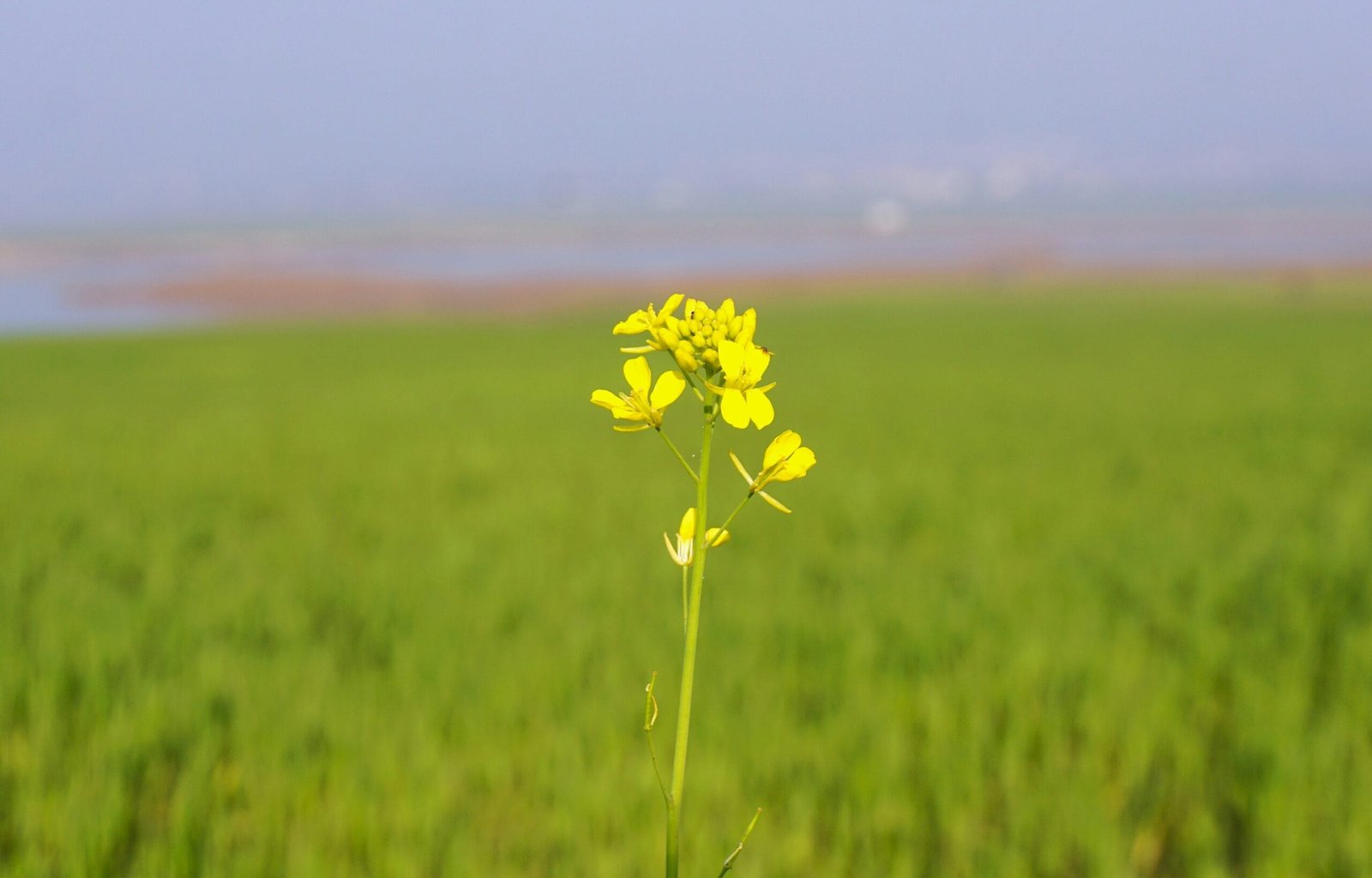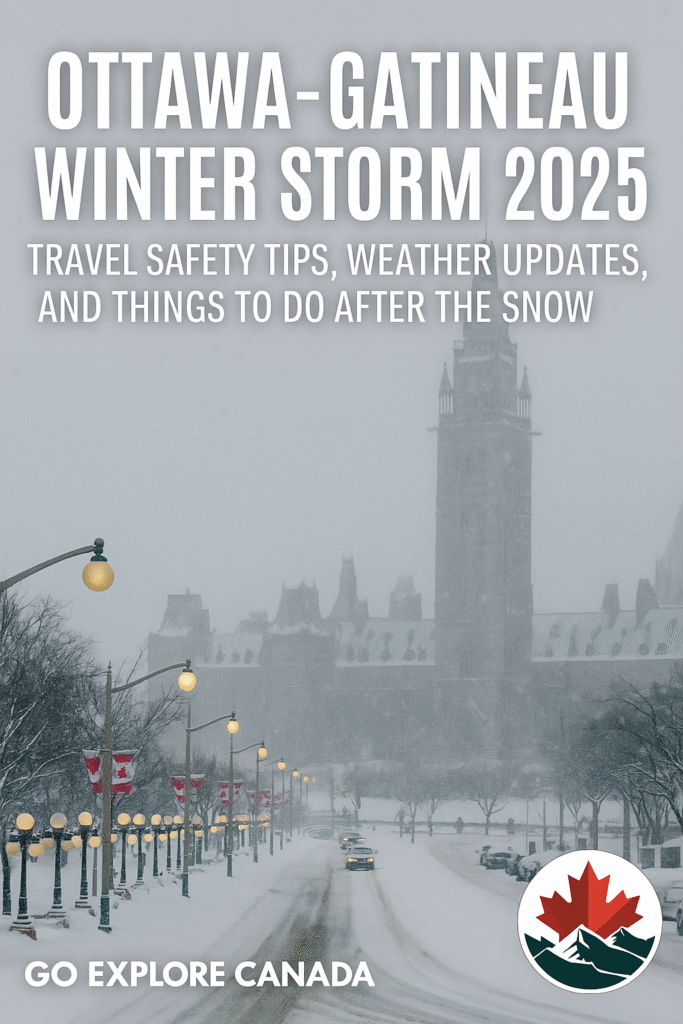
Winter vs Summer in Canada: A Comparative Guide
Posted in General
Introduction to Seasonal Differences in Canada
Canada is renowned for its diverse climate, which varies dramatically between its two primary seasons: winter and summer. Each season brings its own unique characteristics, influencing the lifestyle, culture, and overall experience of residents and visitors alike. This introduction aims to shed light on these seasonal contrasts, particularly focusing on the differences in temperature variations, weather patterns, and seasonal recreational activities associated with winter vs summer in Canada.
During winter, which typically spans from December to February, Canadians often face frigid temperatures that can drop to as low as -30°C in certain regions, accompanied by significant snowfall. The winter season transforms the Canadian landscape into a picturesque wonderland, attracting winter sports enthusiasts eager to engage in activities such as skiing, snowboarding, and ice skating. Furthermore, the long, dark nights of winter create a unique atmosphere, characterized by festivities such as winter festivals and holiday celebrations that celebrate the season’s charm.
In essence, understanding these seasonal differences is crucial for anyone looking to experience the full spectrum of what Canada has to offer. Whether one prefers the snowy landscapes and winter sports or the warmth and vibrancy of summer outdoor activities, Canada presents a rich tapestry of seasonal delights.
Climatic Overview: Winter in Canada
Winter in Canada is characterized by its extensive and often harsh weather conditions, which vary significantly across the country’s vast geographic landscape. The season typically spans from late November to early March, but in northern regions, it can begin as early as October and last until late April. During this time, temperatures plummet, and regions such as the Prairies, Northwest Territories, and parts of Quebec regularly experience severe cold, with average temperatures ranging from -15°C to -30°C.
Precipitation levels during the winter months also differ, as coastal areas like British Columbia may receive significant rainfall, while inland areas accumulate substantial snow. The snow cover can range from a few centimeters in some regions to several meters in others, notably in places like the Rockies and across Northern Ontario. Additionally, weather phenomena such as the polar vortex can exacerbate cold temperatures, leading to extreme weather events that impact daily life significantly.
The challenges posed by winter weather in Canada are multifaceted. Daily life can be disrupted due to heavy snowfall, icy road conditions, and freezing temperatures, necessitating adjustments in transportation, work schedules, and general outdoor activities. The impact on travel is particularly critical, as flights may be delayed, and road conditions can pose safety risks. Despite these challenges, winter in Canada also presents unique opportunities for outdoor recreation, appealing to enthusiasts of winter sports such as skiing, snowboarding, and ice fishing.
In summary, the climatic overview of winter in Canada reveals a season that is both demanding and enriching. Its characteristics influence not only the environment but also how Canadians adapt their daily routines, demonstrating the resilience and versatility of life in this diverse country. The comparative insights on winter versus summer in Canada help to underscore the distinctive aspects of seasonal life here.
Climatic Overview: Summer in Canada
Summer in Canada presents a striking contrast to its infamous winter months, showcasing a diverse climate that varies significantly across the country’s vast geography. The warm season typically spans from June to August, with average temperatures ranging from a comfortable 20°C to a sweltering 30°C in many regions. Coastal provinces, such as British Columbia, experience moderate temperatures, often benefiting from ocean breezes that help maintain milder conditions. In comparison, the interior provinces, such as Alberta and Saskatchewan, can see temperatures soar above 30°C, particularly in July.
Humidity levels during these months can also vary greatly. In eastern provinces like Ontario and Quebec, it is not uncommon for humidity to reach uncomfortable levels, making the heat feel more intense. Conversely, regions in the prairies tend to experience lower humidity, leading to a drier and often more pleasant summer climate. This difference in humidity plays a significant role in how individuals and communities experience summer across Canada, contributing to outdoor activities and cultural events that take advantage of the warmer weather.
Regional diversity is one of the hallmarks of summer in Canada. The coastal provinces enjoy longer daylight hours and a relatively stable climate, making them ideal for outdoor recreation, from hiking along the Pacific trails to enjoying beach days along the Atlantic coast. The northern territories, while still experiencing summer warmth, see a rapid transition from snow to lush greenery, often marked by the phenomenon of midnight sun. In contrast, the southern regions, particularly in Ontario and Quebec, engage in a plethora of festivals and events, celebrating the warmth and vibrancy of the season.
Overall, the summer season in Canada is defined by its regional variability, affecting not just the weather but also the lifestyle and activities of its inhabitants. This dynamic climatic profile emphasizes the contrast and complement of winter vs summer in Canada, painting a vivid picture of the country’s seasonal appeal.
Cultural Significance: Winter Activities
Winter in Canada is not merely a season; it is a cultural hallmark that influences many aspects of Canadian life. The arrival of colder temperatures brings with it a plethora of activities that celebrate the uniqueness of the season. From coast to coast, Canadians engage in winter sports such as skiing, snowboarding, and ice skating, showcasing their adaptability and resilience in cold weather. Ski resorts, particularly in regions such as British Columbia and Quebec, flourish during this time, attracting enthusiasts from around the globe. The thrill of gliding down snow-covered slopes or skating on frozen lakes symbolizes not just recreation, but a rich tradition woven into the Canadian identity.
Moreover, winter festivals are an integral part of the cultural fabric in Canada. Events like the Quebec Winter Carnival and Winterlude in Ottawa bring communities together to celebrate this season through a variety of activities. These festivals highlight ice sculpting, snowshoeing, and even dog sledding, offering an array of experiences that cater to both residents and tourists. Such gatherings not only enhance community spirit but also encourage participation in winter sports and traditions, ensuring that the cultural significance of winter persists through generations.
Additionally, holiday celebrations like Christmas and New Year’s introduce a sense of warmth amidst the cold. The festive decorations, gatherings, and traditions form a contrasting picture to the snowy landscape, fostering a sense of belonging and togetherness. Many Canadians embrace these celebrations with seasonal events that often include local flavors and customs, further enhancing the unique aspects of winter in this country. Thus, compared to summer activities, winter in Canada is deeply rooted in cultural significance, providing an array of social and recreational opportunities that define the northern lifestyle.
Cultural Significance: Summer Activities
Summer in Canada is marked by an array of cultural and recreational activities that reflect the nation’s diverse identity and spirit. The warmer months provide an opportunity for Canadians to engage in various outdoor adventures, contributing to a vibrant social atmosphere. One popular aspect of summer is the numerous music festivals held across the country. Events such as the Calgary Stampede, Toronto’s Nuit Blanche, and Vancouver Folk Music Festival showcase not only local talent but also attract international artists. These festivals serve as communal gatherings where people from different backgrounds come together to celebrate music, food, and culture.
In addition to festivals, summer activities in Canada frequently include outdoor excursions that capitalize on the country’s breathtaking landscapes. Hiking, camping, and biking in national parks, such as Banff and Jasper, are popular pursuits. These parks not only provide a stunning backdrop for adventure but also foster a sense of belonging among participants. There are countless trails to explore, ranging from leisurely walks to challenging hikes that cater to all levels of experience. Such activities encourage Canadians to reconnect with nature, enhancing community bonds through shared experiences.
Another significant element of the summer season is beach outings. Coastal areas, lakes, and rivers become gathering spots for families and friends looking to relax and socialize. Activities like swimming, picnicking, and beach sports create a lively atmosphere that emphasizes leisure and enjoyment. The summer weather also encourages Canadians to partake in various sports, from soccer to kayaking, promoting physical fitness and camaraderie. The cultural significance of these summer activities is underscored by their ability to cultivate community spirit and foster lifelong memories, making this season a cherished part of the Canadian experience.
Impact on Lifestyle: Winter Challenges
Winter in Canada brings a unique set of challenges that significantly impact the day-to-day lives of its residents. One of the most prominent challenges is transportation. Snow and ice accumulation can make roads treacherous, leading to increased travel times and heightened accident risks. Public transport also faces disruptions, with delays often occurring due to severe weather conditions. To cope with these challenges, many Canadians invest in winter-specific tires and take driving courses focused on winter conditions to enhance safety while navigating their local streets.
Heating costs also represent a significant concern during the colder months. As temperatures plummet, households must increase their heating usage, leading to substantial energy bills. In response, residents often seek to enhance their home’s insulation or invest in energy-efficient heating systems to mitigate the financial burden of winter. Additionally, some families may opt for budget adjustments to account for these increased expenses, ensuring that they can maintain a comfortable living environment.
Another often-overlooked aspect of winter is its psychological impact. The shorter days and lack of sunlight can contribute to Seasonal Affective Disorder (SAD), which affects many Canadians as winter progresses. This condition may lead to symptoms such as lethargy, depression, and anxiety. To combat these effects, individuals may incorporate activities that promote mental well-being during the winter months, such as regular exercise and social gatherings. Furthermore, the use of light therapy lamps is becoming increasingly popular as a means to replicate sunlight and alleviate symptoms associated with shorter days.
In conclusion, while winter poses numerous challenges for Canadians—from transportation issues and rising heating costs to psychological effects—residents continually find ways to adapt by adopting innovative solutions and promoting well-being to navigate the unique landscape of winter in Canada.
Impact on Lifestyle: Summer Joys
The summer season in Canada brings with it an array of lifestyle enhancements that many residents eagerly anticipate each year. One of the primary benefits of summer is the extended daylight hours, which often result in increased opportunities for outdoor activities. Canadians embrace these long days by engaging in a variety of recreational pursuits such as hiking, biking, and swimming. Parks and beaches become bustling hubs, attracting families and friends who gather to enjoy the warmth and beauty of nature.
Furthermore, the warm climate fosters a culture of outdoor living. Canadians take advantage of the sunny weather by hosting barbecues, picnics, and festivals. These social gatherings promote a sense of community, as neighbors come together to celebrate the season. Local markets and outdoor events flourish, offering residents a chance to interact, shop for local produce, and partake in cultural festivities that highlight the diversity of Canada’s population.
The positive impact of summer on mood cannot be overstated. With an abundance of sunshine, many Canadians report heightened levels of happiness and energy compared to the winter months. This seasonal uplift can lead to increased physical activity as people feel more motivated to take advantage of the great outdoors. The mental health benefits are substantial, as the warm weather allows for greater social interaction and engagement in leisure activities, which can reduce feelings of isolation often felt during the colder months.
Moreover, summer in Canada often translates to a slowdown in the pace of life. People tend to prioritize leisure over work, taking vacations to enjoy the season. This shift contributes to a collective appreciation for the beauty of summer, making it a time of joy and relaxation in stark contrast to the challenges posed by winter. Overall, the lifestyle during summer in Canada showcases a vibrant and positive atmosphere that many cherish and look forward to experiencing year after year.
Environmental Considerations: Winter vs Summer
Canada’s diverse landscapes undergo significant transformations between winter and summer, creating contrasting environments that influence local ecosystems and wildlife. In the winter months, many species exhibit remarkable adaptations to survive the harsh conditions. For instance, animals like the snowshoe hare and arctic fox develop thicker fur, while others, such as bears, enter a state of hibernation to conserve energy. The snow cover provides insulation for the ground, protecting roots and seeds from extreme cold, thus sustaining plant life beneath the surface.
Additionally, snow acts as a crucial component in maintaining ecological balance. It plays a fundamental role in hydrology, as it melts during spring, releasing water that replenishes rivers and lakes, supporting aquatic ecosystems and diverse flora. However, excessive snowfall can lead to increased soil erosion and habitat destruction as permafrost thaws, highlighting the importance of balancing winter conditions for environmental health.
Conversely, summer in Canada brings a surge of warmth that supports biodiversity and ecological productivity. The longer days and increased temperatures foster a vibrant display of life as plants flourish and animals become more active. Many species, including migratory birds, return to thrive in the lush green landscapes. Summer heat encourages photosynthesis, resulting in the flourishing of various plant species which, in turn, attracts pollinators. This cycle underscores the vital role summer plays in sustaining ecological networks.
However, the rising temperatures also present challenges, such as increased drought conditions that can stress ecosystems. Communities of wildlife must cope with changes in food availability and habitat conditions, making it essential to understand the environmental differences inherent in the seasons. Ultimately, winter vs summer in Canada presents a complex interplay of adaptations and impacts that shape the natural world across this vast country.
Conclusion: Embracing Both Seasons
In evaluating the distinct characteristics of winter vs summer in Canada, it becomes evident that each season offers unique experiences and challenges that contribute to the country’s rich cultural mosaic. Winter in Canada is marked by breathtaking landscapes draped in snow, providing opportunities for winter sports, snowshoeing, and other outdoor activities. The beauty of frost-covered trees and winter festivals draws people together, fostering a sense of community and celebration despite the chilly temperatures.
Conversely, the summer months introduce a vibrant array of activities, characterized by warm weather, lush greenery, and outdoor festivities such as barbecues, music festivals, and various sporting events. The inviting parks and stunning coastlines beckon both residents and tourists to partake in leisurely pursuits, highlighting the country’s natural beauty and promoting a dynamic social environment. This seasonal contrast illustrates how winter and summer in Canada coexist, offering individuals various ways to engage with their environment.
As Canadians navigate through the extremes of their climate, they cultivate a resilient spirit that celebrates the ebb and flow of seasonal change. Winter challenges residents with harsh conditions, yet it simultaneously offers compelling experiences that unify communities. Summer, on the other hand, invites people outdoors to enjoy the warm sunshine and engage in a plethora of recreational activities, creating lasting memories. Both seasons, in their unique ways, play a crucial role in shaping the cultural identity of Canada.
Ultimately, rather than choosing one season over the other, embracing the beauty and diversity inherent in both winter and summer can enhance one’s appreciation of Canada’s rich tapestry. By recognizing the distinct offerings of each season, Canadians and visitors alike can fully experience the country’s fascinating character throughout the entire year.

Welcome to GoExploreCanada.com, your go-to guide for exploring Canada. Discover tips, travel guides, and stories about the breathtaking landscapes, vibrant culture, and delicious cuisine from coast to coast. Join us on an adventure to uncover the hidden gems of Canada!
“Canada Is My Therapy” Hiking & Camping Shirt – Explore. Camp. Breathe.
Price range: $20.50 through $34.00














